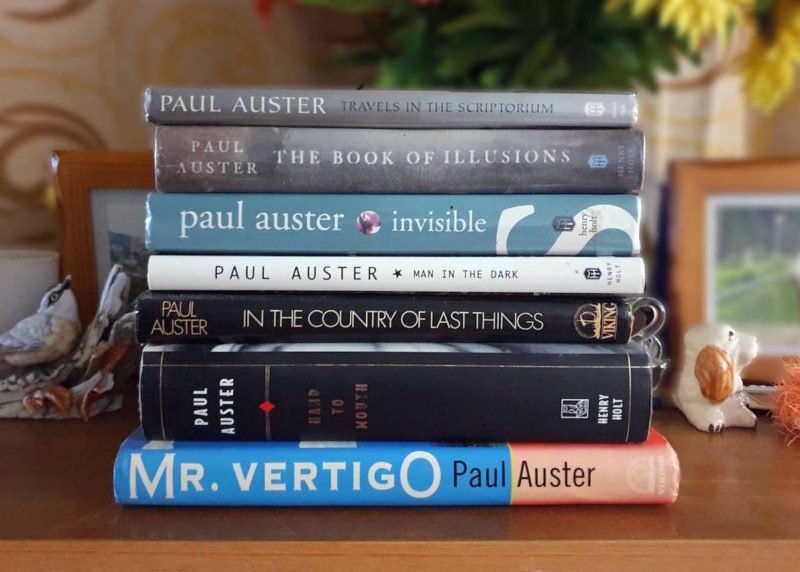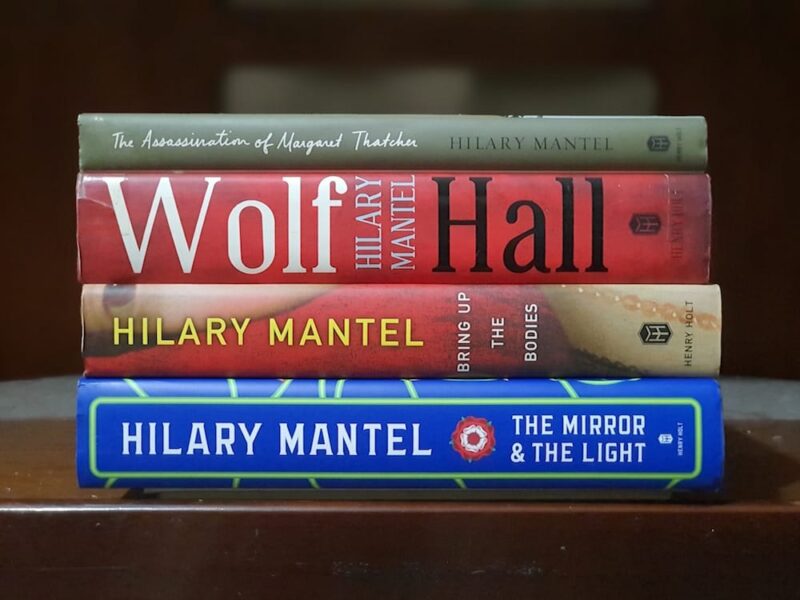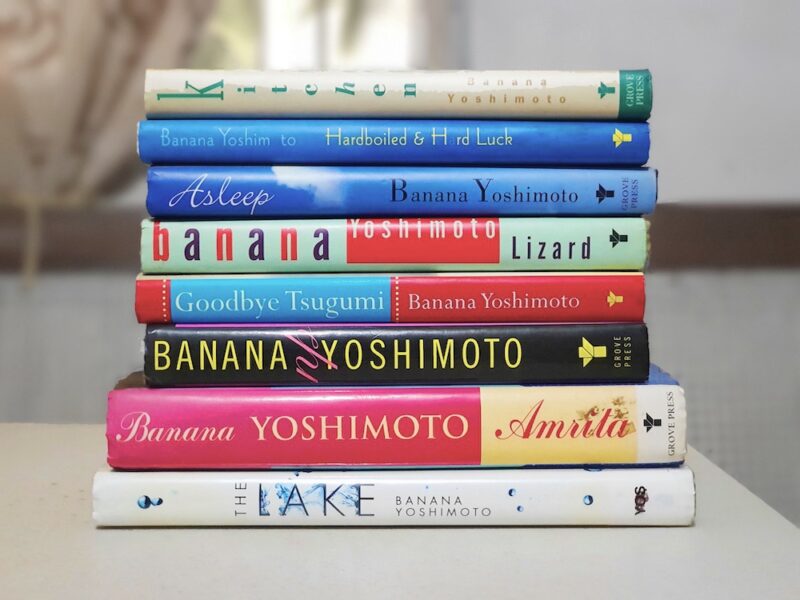To survey the varied worlds of Thomas Pynchon is to move from postwar conspiracies to cyberspace paranoia, from countercultural haze to historical reconstruction. This article showcases a compilation that opens a path through five of Pynchon’s works that, though each vastly different, share his audacious reach and linguistic virtuosity. By sidelining Gravity’s Rainbow (1973) in this selection, the aim is to emphasize how his other novels define and refine his aesthetic trajectory, not merely echo his masterpiece.
Each work in this collection captures a distinct stage in Pynchon’s creative evolution. One revisits the ruins of the counterculture where idealism falters under surveillance and amnesia. Another turns the detective form into a hallucinatory quest through corruption and fading revolution. A later novel spans continents and centuries that blends scientific pursuit with political betrayal. In another, he reimagines the Enlightenment through geometry, colonization, and moral uncertainty. The most recent descends into the circuitry of the digital age and exposes power disguised as connectivity. Together, these books trace Pynchon’s movement from lost utopias to coded realities while sustaining his unmatched precision and imaginative reach.
Inherent Vice
The first book in the pile, Inherent Vice (2009), reads like an acid-soaked detective novel filtered through Pynchon’s sensibility. Its dialogue crackles with idiomatic absurdity, and scenes drift into psychedelic reverie. Yet beneath the haze, the novel remains tightly plotted: the missing persons, the run-ins with corporate power, and the shifting alliances all play out with precision. The language is playful but never unserious; Pynchon uses the tropes of noir as a frame through which he dismantles their conventions.
Its thematic center lies in entropy and the erosion of countercultural optimism. Set in a fading 1970s Los Angeles, Inherent Vice places Larry “Doc” Sportello in the middle of institutional cover-ups and creeping corporate influence. What begins as a comedic detective puzzle turns into a meditation on how radical impulses are absorbed, neutralized, or commodified. The chaos of the era mirrors Pynchon’s preoccupation with systems that bend without breaking, mutating quietly from within.
In the broader lineage of Pynchon’s novels, Inherent Vice is notable for its tonal agility. It bends toward humor, melancholy, and social critique in equal measure—less sprawling than Against the Day (2006), lighter than Mason & Dixon (1997), yet richer than a conventional crime story. It was adapted into film by Paul Thomas Anderson in 2014, starring Joaquin Phoenix, which captures much of the novel’s languid density and dark humor.
Bleeding Edge
With Bleeding Edge (2013), Pynchon enters the shadowed net of early 2000s New York. The prose shifts sharply: digital interfaces, hacker speak, and corporate jargon appear side by side with his signature wit and play. He uses sustained close third person, dialogue fragments, and data analogies to evoke the fragmented subjectivity of life in (and through) the Web. Narrative arcs sometimes feel asynchronous, which mimics the simultaneity of online existence.
The core of Bleeding Edge lies in surveillance, trust, and the commodification of information. Maxine Tarnow investigates a fintech company and uncovers layers of financial fraud, state complicity, and virtual illusion. Pynchon explores how the digital world and financial structures of pre-9/11 New York were already eroding civil liberties, with the attacks themselves serving as the catastrophic event that accelerates the transition to an era of digital opacity and pervasive national security. He examines the boundary between exposure and secrecy, between what can be known and what remains concealed in code.
In Pynchon’s body of work, Bleeding Edge registers as his most overtly techno-political novel that marries conspiracy to early internet culture. It resonates as a contemporary counterpoint to Against the Day in its critique of infrastructure, but it also shares affinities with Inherent Vice in its dark humor and shifting genres. The novel captures the anxieties of a world moving online, where information becomes both a weapon and currency and where human connection risks dissolving into data. In its vision of early digital life, Bleeding Edge anticipates the blurred boundary between freedom and control that defines the modern age.
For a few memorable quotes from the book, please refer to our earlier article, “Bleeding Edge.”
Vineland
Pynchon’s Vineland (1990) presents a leaner, more accessible style than some of his denser tomes. The prose moves with a conversational urgency, often pivoting into asides, random bursts of popular song lyrics, or sudden shifts in paragraph structure. This apparent stylistic looseness masks structural ambition: the novel is not simply episodic in nature but precisely arranged to reflect the disjointed trajectories of its characters’ lives, weaving between the fading idealism of the 1960s counterculture and the oppressive reality of the Reagan-era surveillance state.
At the heart of Vineland lies the tension between cultural memory and the forces that seek to suppress or rewrite it. Pynchon frames a narrative around Zoyd Wheeler, Prairie, and ex-activist Frenesi Gates, whose past entanglements with FBI oversight haunt their present. Institutions (law enforcement, media, and local and state power) become characters in their own right, prosecuting not only crime but also desire, rebellion, and forgetting. The novel probes how a culture idealizes its youth movements even as it criminalizes them later.
Within the Pynchon canon, Vineland stands as a moment of partial reconciliation. It is less labyrinthine than Gravity’s Rainbow yet more immediate and socially grounded than The Crying of Lot 49 (1966). The novel reveals Pynchon’s ability to merge political critique with narrative vitality by exploring the collision between countercultural memory and state surveillance. Its tone alternates between satire and melancholy by exposing how rebellion becomes nostalgia and how power rewrites the very history it once sought to suppress.
The novel’s renewed relevance owes much to One Battle After Another (2025), a film loosely derived from Vineland that reimagines its themes of disillusionment and state intrusion within a contemporary setting. Also directed by P. T. Anderson and starring Leonardo DiCaprio, Sean Penn, and Benicio del Toro, the film transforms Pynchon’s tale of divided loyalties and fading idealism into a modern study of surveillance and power. Though it departs from the novel’s plot, it preserves its moral unease and elegiac tone. In this light, Vineland stands as a hinge in Pynchon’s career, connecting his earlier explorations of paranoia to the digital anxieties of Bleeding Edge and the vast conspiratorial networks of Against the Day.
Against the Day
Against the Day expands both in scale and in ambition. It spans decades—from the 1890s to World War I—and encompasses ballooning adventurers, anarchists, mathematicians, tycoons, and crusading journalists. Its structure is kaleidoscopic, shifting locations, timelines, and voices with both exhilaration and formal control. The prose can be dense, but Pynchon balances it with passages of lyric wonder and sustained narrative momentum.
The novel confronts the tension between utopian impulses and technological acceleration. Across its many threads—airship inventors in Chicago, subterranean conspiracies in Panama, quantum musings in Paris—Pynchon explores how idealism collides with capitalist modernity and state power. The question of whether history can be leavened by bricolage or collective action recurs through characters who imagine alternate futures even while witnessing mechanized warfare and financial disintegration.
Within his oeuvre, Against the Day stands as Pynchon’s monument to ambition and risk. It rejects the intimacy of earlier works and the immediacy of his later, more technologically mediated narratives, instead expanding into vast systems, geopolitical tensions, and temporal play. Its density presents a vigorous challenge, yet its rewards come from Pynchon’s architecture of airships, conspiratorial networks, mathematical speculation, and transnational intrigue. The novel remains a testament to his boldest impulses—its scale may divide readers, but its rewards linger in memory.
Mason & Dixon
Mason & Dixon immerses the reader in eighteenth-century history while exposing the deliberate artifice of storytelling. Pynchon adopts the idiom of Enlightenment prose—its archaic diction, capitalized nouns, and long, looping sentences—while filling the text with digressions and mock-scholarly asides that echo the voice of period historians. The result is both sumptuous and ironic: you hear eighteenth-century voices while sensing a modern conscience threading through them. The novel becomes a meditation on time, knowledge, and the boundaries that science and imperial power attempt to draw across the world.
Thematically, the novel reaches toward the limits of Enlightenment rationality. Charles Mason and Jeremiah Dixon undertake the surveying of the Mason-Dixon line, yet their work cannot remain detached from colonial ambition, slaving economies, and deep uncertainty. The geodetic tools they employ stand in for the belief in order, but Pynchon exposes how knowledge, mapping, and power intertwine. Memory, numbers, and uncertainty: these forces haunt their journey.
Among the novels by Pynchon, Mason & Dixon is unusual for presenting history as a terrain of doubt. It does not succumb into conspiracy, as Against the Day might, but holds open the contradictions between science, myth, and politics. The novel examines how the act of mapping and quantifying the world—through the drawing of borders, the use of instruments, and the pursuit of precision—becomes inseparable from imperial designs and the drive to control territory. It encourages reflection on colonial expansion, collective memory, and the limits of reason.
Please read our previously published article for a more in-depth analysis of Mason & Dixon.
Closing Acknowledgments
Although this list does not include Gravity’s Rainbow or The Crying of Lot 49, those works cast long shadows over any Pynchon survey. For one, The Crying of Lot 49 introduces strands of network paranoia, alternate reality, and hermetic symbols that echo throughout his later work. Gravity’s Rainbow, for many, remains his audacious masterpiece—its formal risk, encyclopedic range, and cultural critique have made it a touchstone and a mountain around which fans and critics orbit.
By following the path from Vineland through Bleeding Edge, Pynchon’s avid readers can trace how he refashions form, recasts the social, and repositions himself in response to technological and geopolitical change. Each of these novels—while fully alive on its own terms—carries forward a dialectic between absence and control, between hyperreal systems and individual subjectivity. Together, they affirm the enduring vitality of his vision and the continuing force of his imagination beyond the shadow of Gravity’s Rainbow.
AUTHOR PROFILE
Thomas Ruggles Pynchon, Jr., was born on May 8, 1937, in Glen Cove, Long Island, New York, to Thomas Ruggles Pynchon, Sr. (an engineer), and Katherine Frances Bennett (a nurse). As a child, he attended both Episcopal services (with his father) and Catholic services (with his mother). His early schooling showed signs of precocity; he reportedly skipped grades and demonstrated an early taste for writing.
In 1953, at age sixteen, Pynchon graduated from high school and matriculated at Cornell University, initially studying engineering physics. At the end of his sophomore year, he joined the U.S. Navy, serving in support roles, including electrician’s mate duties, and was aboard the destroyer USS Hank in the Mediterranean during the Suez Crisis period. After roughly two years, he returned to Cornell and shifted his focus to English, earning his B.A. with distinction in 1959 and gaining election to Phi Beta Kappa.
Pynchon’s literary career commenced with short fiction appearing in college publications and literary magazines in the late 1950s, including “The Small Rain” in 1959. After graduation, he worked for Boeing in Seattle as a technical writer and safety documentation compiler, a job that influenced his later depiction of corporate and technological themes. His first novel, V. (1963), earned critical notice quickly, and he followed with The Crying of Lot 49 (1966) and Gravity’s Rainbow (1973), the last of which won the U.S. National Book Award for Fiction in 1974.
Despite his prominence, Pynchon has resolutely guarded his privacy. Very few reliable photographs exist, and he has largely avoided public appearances, interviews, or personal disclosures. His aversion to publicity has become a defining feature of his public image; some rumors and hoaxes (for instance, those claiming he was J. D. Salinger) have arisen in part because so little confirmed personal detail is available.
Over the decades, Pynchon published a succession of ambitious and often challenging novels: Vineland (1990), Mason & Dixon (1997), Against the Day (2006), Inherent Vice (2009), Bleeding Edge (2013), and in 2025, a new work, Shadow Ticket (to appear October 7, 2025). His oeuvre is often celebrated for its density of reference—scientific, musical, historical, mathematical—and for its exploration of paranoia, systems, entropy, and the interplay of technology and human agency.
Further Reading
Thomas Pynchon on Wikipedia
From V to Vineland and Inherent Vice: Thomas Pynchon’s books – ranked! by John Keenan, The Guardian
The Essential Thomas Pynchon by A.O. Scott, The New York Times
The First Reviews of Every Thomas Pynchon Novel by bookmarks.reviews




